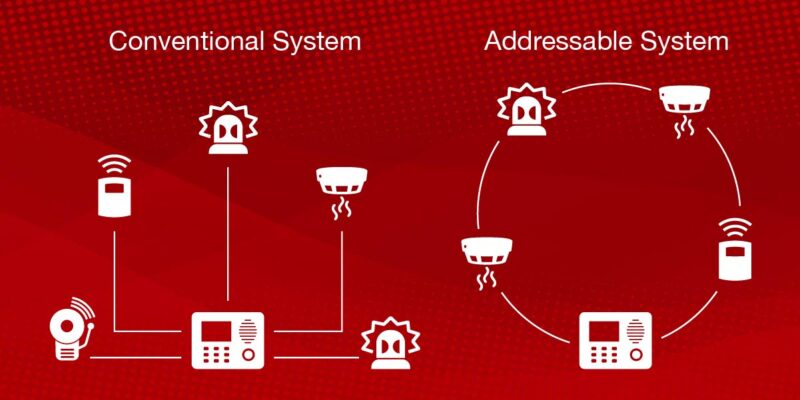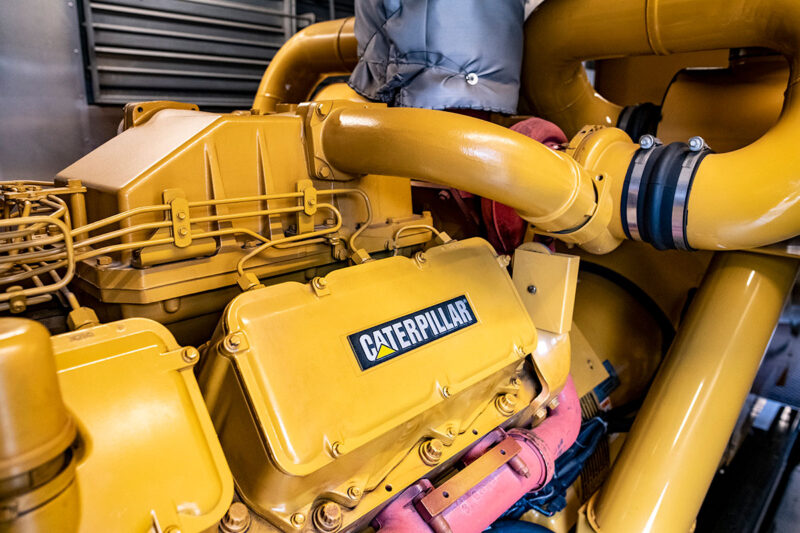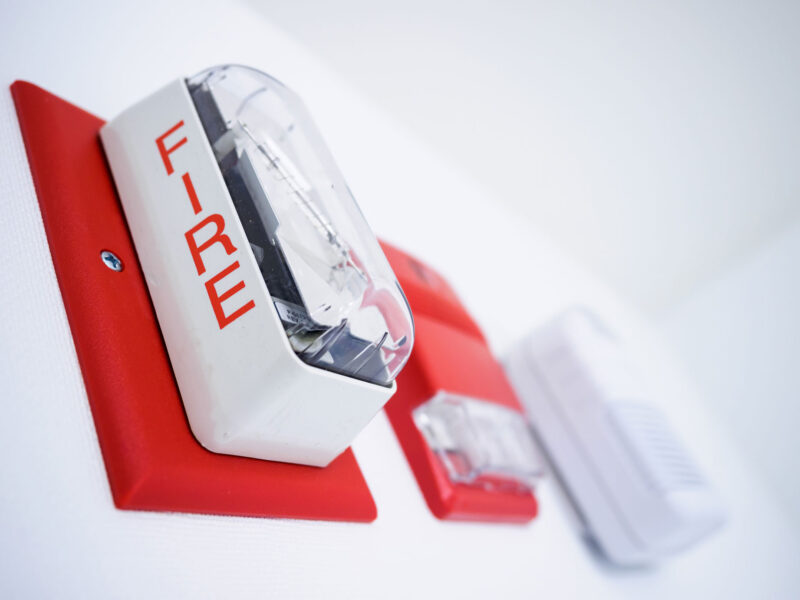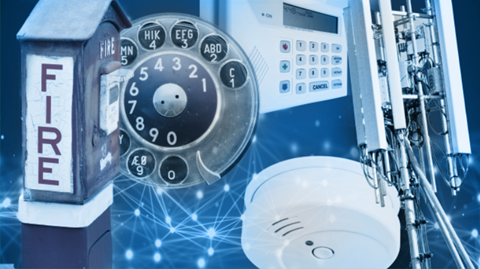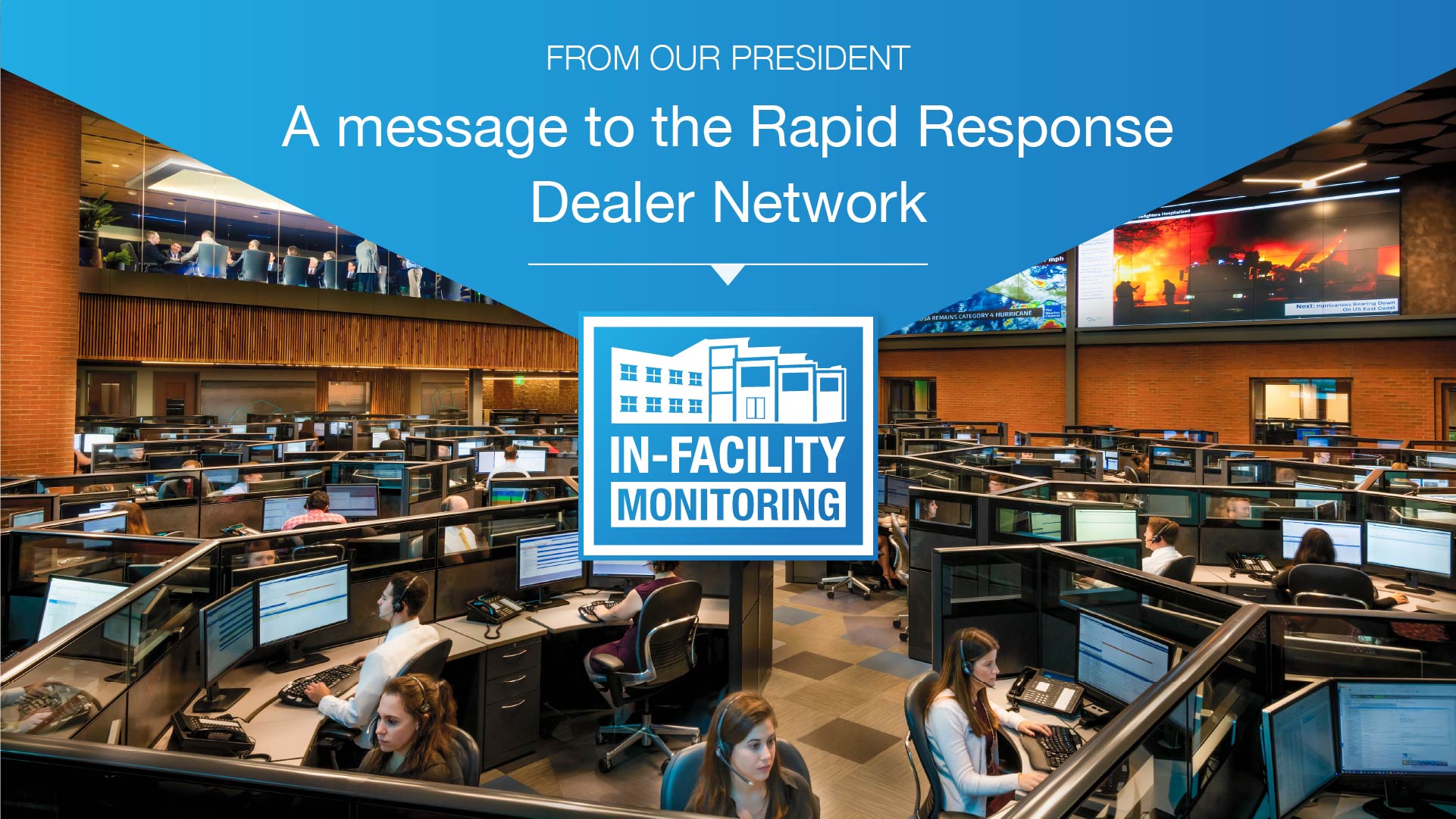Have you ever wondered about the details of a fire alarm system? The blaring sound of a fire alarm is often our first warning of danger. But what happens behind the scenes to trigger that alarm and save lives? In this blog, we’ll delve into the critical components and functions of different types of fire alarm systems.
Fire alarm systems are made of six major components: a control panel, initiation devices, supervisory devices, power supply, notification, and emergency control functions.
These components work in harmony to ensure effective professional fire monitoring and the safety of those who live or work in the space.
Initiation Component
The purpose of the initiation function of a fire system is to report the system’s status – either a supervisory, trouble, or alarm condition.
There are two types of initiating devices — Conventional and addressable.
Conventional systems work by dividing the building into different zones or Indicating Circuits, with each zone having several detection devices (such as smoke detectors, heat detectors, manual stations points, etc.) connected to it. When a device is triggered, a switch contact shortens the circuit, increasing the current running through it. This increase in current is interpreted as a signal. In a conventional system, each individual device is linked to the control panel through its dedicated wire, rather than sharing a common connection. Each wire connects one end to the panel and the other end to the device. Once one device is activated, no other device can send a signal, meaning one device will put the entire circuit in alarm. However, integrators will usually design circuits that easily allow emergency responders or technicians to determine where the alarm is coming from. The integrity of the wire is supervised by either returning the end of the wire to the control panel or using an End of Line Resistor
Addressable systems function by detecting changes in the environment and converting them to digital format. Some addressable devices can communicate a range of values, including smoke density, temperature, water level, etc.
As opposed to conventional systems, with an addressable system, all devices are interconnected by a single pair of wires. These systems assign each detection device a unique address — hence its name — that consists of a binary string, allowing the control panel to identify the specific device that has been triggered. This makes it easier to locate the device that is in alarm or trouble status, which can be especially useful in larger buildings. In the addressable configuration there are many different styles of circuits that can be used to address building survivability requirements as well as specific needs of the system
Due to its modern features, addressable systems are now the preferred way of installing systems even in smaller installations because of the high cost of homerun wiring and labor.
Supervisory Component
Most fire suppression systems, such as sprinklers, have supervisory devices to detect abnormalities. Supervisory devices ensure that all detection devices are working properly, and if it detects something is not, it sends a signal. Just like initiation devices, supervisory systems communicate directly with the control panel and can be either addressable or conventional.
The type of system used should be based on the specific needs and requirements of the building, including the sensitivity of the detector, the size and layout of the building, the budget, etc.
Supervisory devices are crucial for suppression systems because of two factors:
First, the valves must always be on for the water to flow in case of emergency (which is done by installing a switch that indicates the valve status).
Second, the water needs to stay above freezing temperature at all times where the pipes are filled with water (this is monitored by placing thermometers in the water that can communicate with the control panel).
Other water-based fire suppression systems require pressurized air or nitrogen in the piping system or rely on a water tank for storage. Variables like temperature, pressure and water level are also monitored with a supervisory device.
There are many other types of Supervisory functions, such as Duct Detection. Low/High air pressure, Low/High Temperature, Power to Pumps and Pump Status, Elevator Status, Dampers and Fan Control to name a few.
Power Component
There are several options available for providing reliable power to a fire alarm system, as well as specific calculations required to guarantee an adequate backup power source.
To learn more about these calculations, visit the NFPA’s guide to fire alarm basics.
The primary power source for a fire alarm system typically comes from one of the following options:
Electric Utility: Most commonly, fire alarm systems are connected to the electric utility grid, drawing power directly from it. This source is reliable as long as the grid remains operational.
- Engine-Driven Generator: In some cases, an engine-driven generator can serve as a primary power source. However, this cannot be a standby generator but rather a site generator that meets the specific requirements outlined in the NFPA 72®, the National Fire Alarm and Signaling Code®.
- Cogeneration System: Cogeneration is a highly efficient process that uses one fuel to generate two types of energy — Electrical and thermal.
- Secondary Power Sources: To ensure continuous operation of the fire alarm system, secondary power sources are essential and often required. These secondary power sources are typically either batteries, emergency generators or Uninterrupted Power Supply (UPS).
- Batteries: Batteries, particularly valve-regulated lead-acid batteries, are a commonly used secondary power supply. These batteries are usually located within the fire alarm control unit enclosure or in a separate battery box located nearby. The size of the batteries is critical and is based on the system’s requirements. Generally, they must be capable of providing power to the entire fire alarm system for at least 24 hours in standby mode and at least 5 minutes in alarm mode. However, for more advanced systems like Emergency Voice Alarm Communication Systems (EVACS), the batteries must provide capacity for 15 minutes in alarm mode in addition to the 24 hour standby period. This extended alarm time is necessary to support longer evacuation procedures since most buildings equipped with EVACS require continuous communication with occupants during evacuation.
- Emergency Generators: Emergency generators must be designed, installed, and maintained in accordance with the NFPA 110, the Standard for Emergency and Standby Power Systems. Emergency generators are required to be backed up by batteries. However, these only need to be able to run for 4 hours, instead of 24 hours. Emergency generators are typically fueled by diesel or natural gas and can automatically start, providing power when the primary source fails. They are particularly useful for large or complex fire alarm systems where extended backup power is essential.
Uninterrupted Power Supply (UPS): UPS, also known as Energy Storage Systems (ESS) or Stored-Energy Emergency Power Supply Systems (SEPSS) are devices that provide backup electrical power to connected systems in the event of a power outage, fluctuation in the input voltage, or other technical issues. These systems must follow the NFPA 111 code, the Standard on Stored Electrical Energy Emergency and Standby Power Systems, and provide at least 24 hours of backup power.
Notification Component
Fire alarm systems are also equipped to notify building occupants of an emergency. The use of multiple notification methods enhances accessibility and ensures that all individuals, regardless of sensory abilities, can receive timely alerts during emergencies. Notification systems need to comply with the jurisdiction’s fire or life safety code where the building is located.
There are several types of notification methods:
1. Audible Notification
The audible notifications are carefully engineered to generate a specific sound intensity that is meant to surpass the environment sound level. In some cases, there is a requirement for the frequency and pattern. For example, a continuous set of three loud beeps means smoke or fire. As mentioned earlier in this blog, large buildings might be equipped with EVACS. The required sound intensity depends on the signaling mode the system employs, which can be either public or private.
In public mode signaling, the system aims to alert all occupants within a facility about an emergency situation. This mode is typically used to prompt a mass evacuation or response. For instance, in a shopping mall, a fire alarm system utilizes public mode signaling.
In contrast, private mode signaling is designed to selectively alert specific individuals responsible for responding to an emergency while minimizing disruption. For example, in a hospital, the fire alarm system may use private mode signaling to inform hospital staff members discreetly about an emergency, allowing them to initiate evacuation procedures or patient relocations in accordance with the facility’s emergency response plan.
2. Visible Notification
Strobes, devices that produce regular flashes of light, are commonly used to provide visible notifications. The light flashes are easily noticeable in areas with low visibility, such as smoky or dark areas.
The NFPA (National Fire Protection Association) 72 Code outlines requirements for the appropriate placement and brightness of these devices.
3. Other Methods
In specific types of buildings where occupants may have hearing or visual impairments, alternative methods, such as bed shakers or low-frequency audible devices, can be employed to address these impairments.
Monitoring Center Response to a Fire Alarm
When it comes to protecting commercial buildings against fire and carbon monoxide, professional monitoring services play a critical role. As dictated by the NFPA, many commercial buildings are legally required to be monitored by a professional monitoring center. This mandate underscores the importance of having a dedicated team overseeing the safety of these spaces.
Dispatching the Fire Department
One little-known fact that end-users often forget about professional monitoring is the requirement to dispatch the fire department in response to any commercial fire alarms or residential/commercial carbon monoxide alarms. This requirement exists for a good reason — the inherent dangers linked to these types of alarms.
However, beginning in the 2016 iteration of the NFPA 72 code, a provision grants a 90 second window for conducting a verification call before initiating dispatch procedures. Rapid Response encourages Fire Integrators to check with their local AHJ (Authorities Having Jurisdiction) if this 90 second window is desired. NFPA 72 dictates that the AHJ has to approve that request.

It may come as a surprise, but our Monitoring Specialists have insisted end-users evacuate their homes when a carbon monoxide alarm went off, and later found out that it saved their lives! By mandating that monitoring centers dispatch the fire department upon fire and carbon monoxide alarm activation, lives can be saved, and property damage can be minimized.
Emergency Control Functions Component
Lastly, one functionality fire alarm systems possess (that many are unaware of), is the capability to manage emergency functions in the building, such as initiating an elevator shutdown, closing doors, pressurizing stairwells, starting or stopping fans and ventilation, opening up skylights or roof hatches and the list goes on and on with innovative buildings.
Fire systems are equipped with a control circuits which enable the fire alarm control unit to execute essential emergency control functions.
As an example, in the case of an elevator recall, the control panel would direct the elevator to a designated level. If smoke is detected in the designated level, the elevator is redirected to an alternate level. These safety measures ensure the occupants exit the building and avoid floors with fire incidents.
In conclusion, fire alarm systems consist of vital components, each playing important roles in safeguarding lives and property.
The integration of various detection and supervisory devices , along with notification methods have contributed to the multifaceted nature of modern fire alarm systems. These systems are now finely tuned to respond to a range of emergencies, not just fires, and have become an indispensable part of fire safety.
In addition, professional monitoring services have played a pivotal role in enhancing the effectiveness of these systems. Fire systems and professional monitoring services embody the collective wisdom of a century’s worth of innovation, offering not only early warnings but also the potential to save lives and mitigate property damage.

